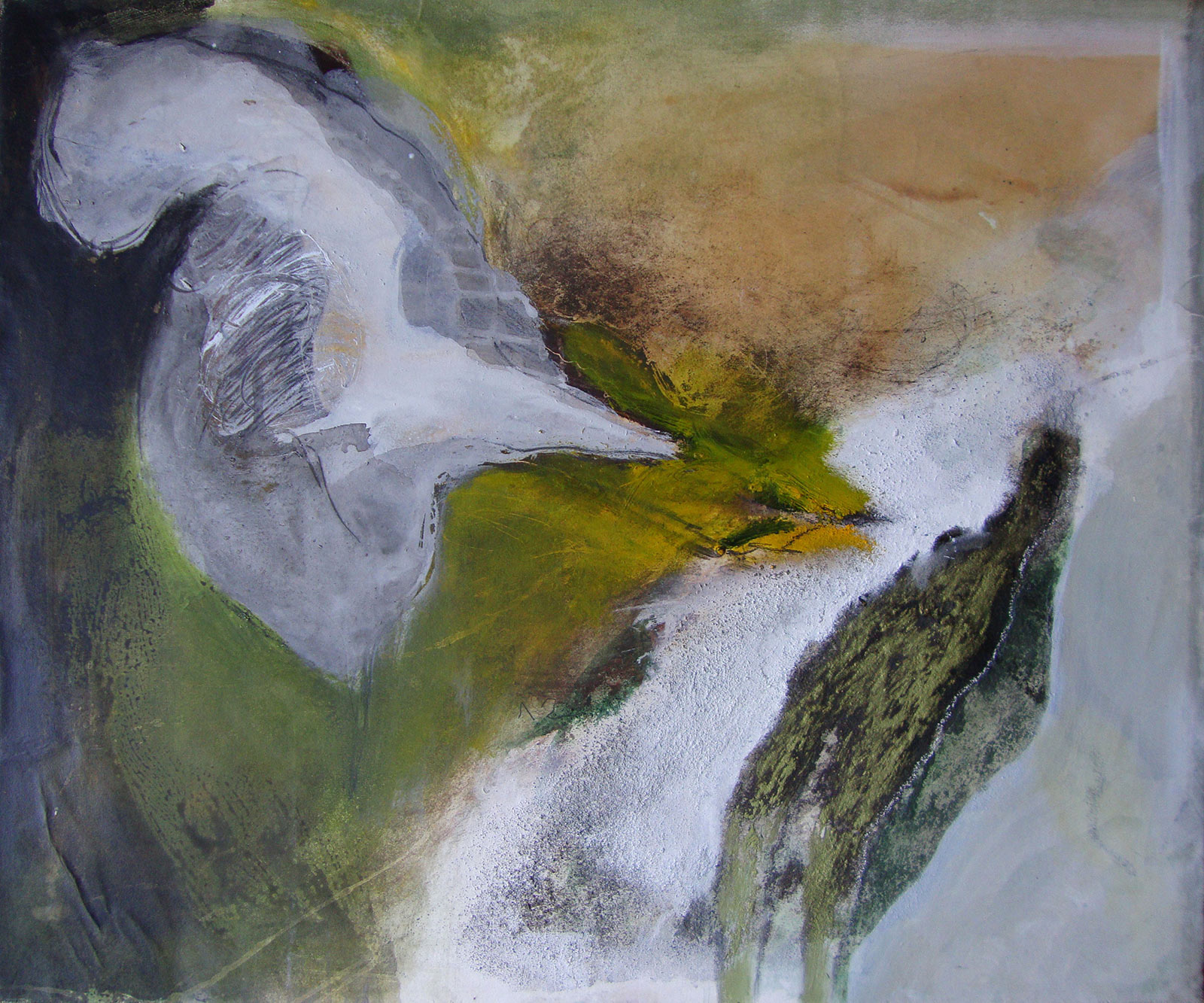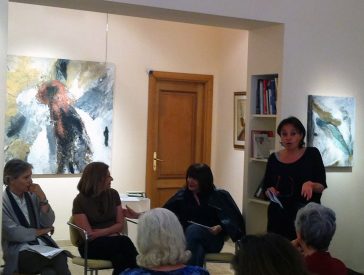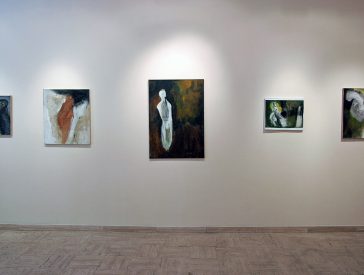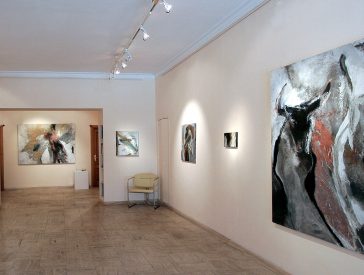
The exhibition is a selection of twenty paintings by the artist Margareth Dorigatti inspired by the ballad Erlkönig (The Elf-King), written by Johann Wolfgang von Goethe in 1782 as part of a Singspiel, Die Fischerin (“The Fisherwoman”).
In the exhibition catalogue Eva Clausen writes:
“The ballad is one of the most famous poems in the German-speaking world. […] From the point of view of form and content, it appears to be clear and easy to follow, yet when it comes to interpretation, it is much more complex, suggesting a wide range of possible readings.
Margareth Dorigatti’s interpretation is a revelation, fluctuating between tension, disintegration and the shaping of form.
Art is not a refuge. Art is a struggle. With oneself. With materials and matter. With truth. Whoever approaches Margareth Dorigatti’s paintings should be warned: you look at your own risk. These paintings provide no mediation, no safe distance. They are works that conjure up without narrating, they don’t describe reality but take its place, becoming another reality that is both imaginary and experienced at a profound level. […]
These overlapping images embody a process that suggests ritual and initiation. Starting out from dissolution, from the abandonment of the self, from absorption into another world, initiation begins, undergoing various stages of purification before knowledge can be achieved. Such is the process of the dissolution of form, and its successive new embodiment. Such is the experience of taking – and making – shape.
Dorigatti’s works are ineluctable. They bewitch whoever observes them. They are like rocks hewn by time, yet unchanging, massive, intensely powerful, and at the same time coldly ethereal and unfathomable. Conjunctions that separate us from the abyss. The enticement is irresistible, and the attraction fatal. This is the voice of the Elf-King. The precipice. An invitation to probe the depths of the subconscious, in apparent free-fall. The artist is aware of the risk, because she perceives release, not only her own. In this fall there is deliverance, in the shape of knowledge. […]
The Ballad is a paradigmatic example of the expressive power of what is left unsaid. Yet the unspeakable is clearly there, in all its immeasurable extension. Such is Dorigatti’s painting, at the same time both abstract and figurative, material and spiritual, aerial and full of gravity. Deeply lived and developed with scientific, alchemical rigour.”
Selected works
Gallery


















